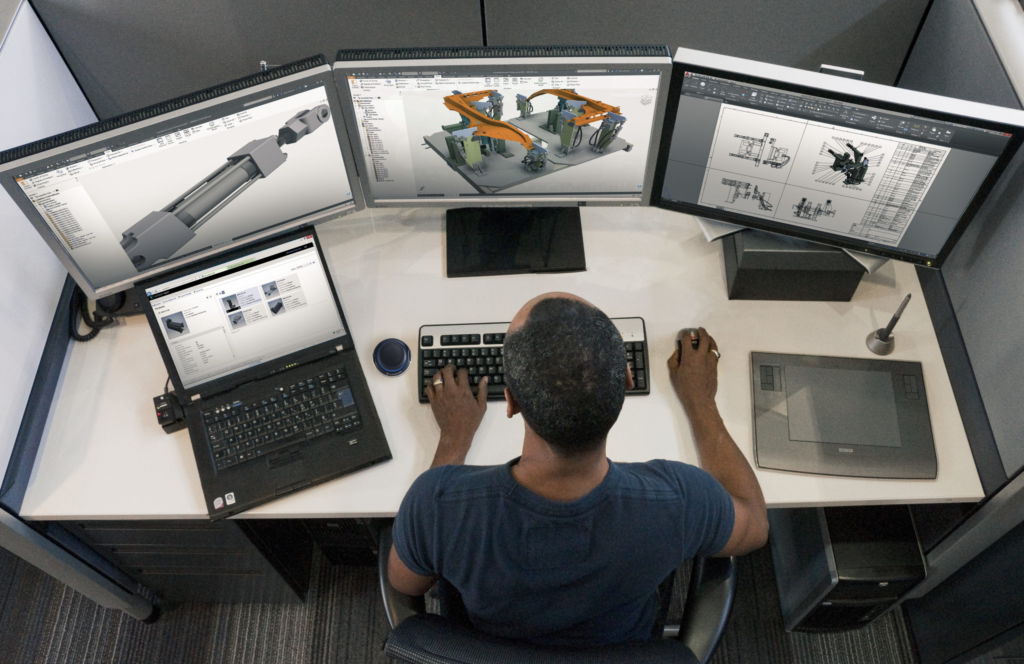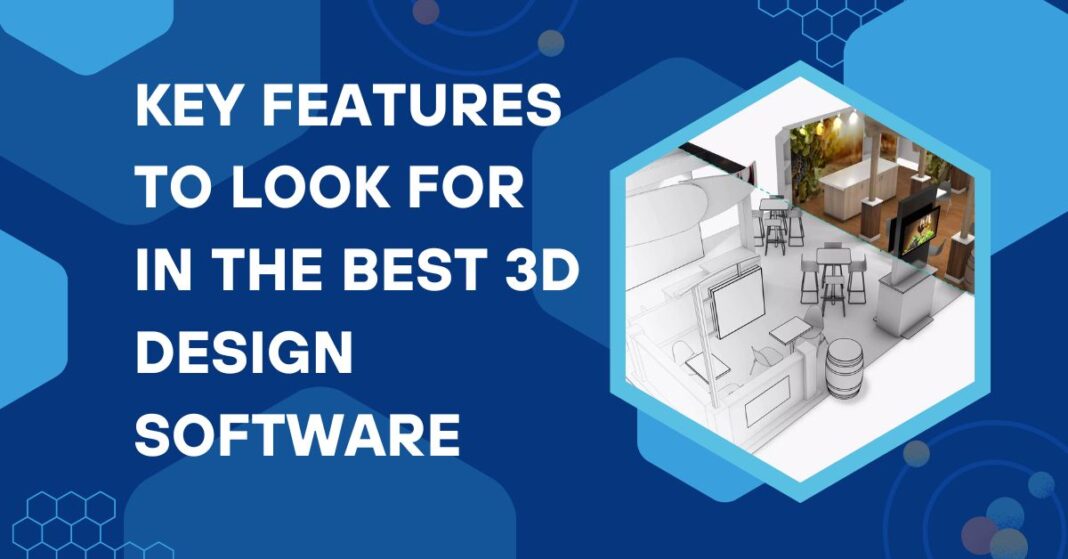Choosing the right 3D design software can be overwhelming with so many options available in the market. Whether you’re a beginner or a professional, it’s important to select software that meets your needs and helps streamline your work. While cost and ease of use are common factors, it’s the features that truly make a difference in your experience with 3D design software. This guide will break down the key features you should look for when selecting the best 3D design software for your project.
User-Friendly Interface
The first thing to look for in any 3D design software is a user-friendly interface. An intuitive design makes it easy for users to navigate through the program, even if they have little experience with 3D modeling. A clean interface with clear menus, icons, and commands ensures you won’t be overwhelmed by complex options. It’s important that the interface allows you to find the tools you need quickly, so you can focus on the creative aspects of your project rather than spending time figuring out how to use the software.
A user-friendly interface is not only beneficial for beginners but also for experienced users who want to complete their work efficiently. Look for software that offers tutorials, tooltips, and helpful guides built into the interface. These features will help users learn the software without external resources. Many 3D design programs also allow you to customize the interface to suit your personal workflow, which can further enhance usability. Overall, a simple and organized interface is crucial for a smooth design experience.
Note – Discover how 3D design software can transform your projects with cutting-edge features and seamless performance. Contact DDSPLM today to explore the best software solutions tailored to your needs and take your designs to the next level.
Customization Options
Customization options are essential when choosing 3D design software. Being able to adjust the software settings to your preferences can greatly enhance your workflow. Whether it’s customizing toolbars, setting up hotkeys, or creating personalized templates, having control over the software’s layout can make a big difference in how you interact with it.
Customization also applies to the output of your designs. The best 3D design software allows you to export files in various formats, ensuring compatibility with other tools or software that you may be using. It’s also helpful if the software offers custom render settings, so you can fine-tune the output to match your project’s requirements. Another aspect of customization is the ability to create and store libraries of frequently used materials, textures, and objects, allowing for faster design processes in future projects.
The ability to customize the software according to your specific needs is a key feature that enhances the design experience and ensures flexibility in how you approach different projects.

Compatibility with Other Tools
Another important feature to consider when choosing 3D design software is its compatibility with other tools and software. In today’s design world, it’s rare to work in isolation. Most designers use multiple programs to achieve the best results. Therefore, selecting software that integrates well with other popular programs is vital. For example, if you use photo editing software, animation tools, or even software for 2D design, your 3D design software should be able to easily exchange files with these tools.
Look for 3D design software that supports multiple file formats for import and export. This ensures that you can seamlessly integrate your designs into other platforms. If your 3D design software is compatible with plug-ins, that’s another big advantage. Plug-ins can add extra features and functionalities, which can save you time and enhance your design capabilities. Being able to work in harmony with other software tools makes your workflow smoother and less time-consuming, which is why compatibility is a feature you should not overlook.
High-Quality Rendering Options
Rendering is an essential part of the 3D design process, as it transforms your 3D models into fully realized images or animations. The quality of the rendering engine in your 3D design software can make or break your final output. High-quality rendering options allow you to showcase your designs in the best possible light, whether for presentations, animations, or client reviews.
Good rendering software will offer options for lighting, shadows, reflections, and textures, all of which are key to creating realistic models. Some programs also offer real-time rendering, which is a huge time saver. Real-time rendering lets you see changes to your model instantly, without waiting for a full render to complete. This helps you make adjustments on the fly and speeds up the overall design process.
In addition to high-quality renders, check if the software offers customizable settings for resolution and rendering speeds. This flexibility allows you to produce anything from quick previews to highly detailed final images, depending on your needs. A powerful rendering engine is a must-have feature for anyone serious about 3D design.
Regular Software Updates
One of the most important things to look for when choosing 3D design software is whether the software is regularly updated. Technology is constantly changing, and regular updates ensure that the software keeps up with new trends, bug fixes, and user needs. Software that is regularly updated is more reliable and often includes new features that can improve your workflow.
Updates also ensure that the software remains secure. As with any digital tool, 3D design software can be vulnerable to security risks, and regular updates help protect your work and data. Many software companies release updates that are based on feedback from users, which means that over time, the software becomes more tailored to the needs of its users. Regular updates are a sign that the software provider is committed to the product and its customers.
If possible, look for software that offers automatic updates, so you don’t have to manually check for the latest version. This feature can save time and ensure that you always have the most up-to-date tools at your disposal.
Collaboration Features
In today’s world, collaboration is key, especially if you’re working with a team or sharing your designs with clients. The best 3D design software will have features that make it easy to collaborate with others. This could include cloud-based sharing, file version tracking, and collaborative editing. If you’re working with multiple designers, having real-time collaboration features can be extremely beneficial.
Cloud storage options are especially useful as they allow team members to access and modify files from anywhere. Some software also offers collaborative editing tools, where multiple users can work on the same design simultaneously, making teamwork more efficient. Additionally, having file versioning features means that you can keep track of all changes made to a project, which is important for accountability and project management.
Effective collaboration features make it easy to share ideas, track progress, and deliver projects faster, which is why they are a key feature to look for in any 3D design software.
Customer Support and Community Resources
Last but certainly not least, consider the level of customer support and community resources available when choosing 3D design software. No matter how intuitive or easy-to-use the software is, there will inevitably be times when you need help. Good customer support ensures that you can resolve issues quickly and get back to your project. Look for companies that offer multiple channels of support, such as live chat, email, and phone support.
In addition to direct customer support, having access to community resources is a huge advantage. Many software programs have active online communities where users share tips, tutorials, and advice. These communities can be incredibly helpful for both beginners and experienced users. Forums, online tutorials, and user-generated content can provide valuable insights and shortcuts that improve your design experience.
Having strong customer support and a vibrant user community can make your experience with 3D design software much smoother and more enjoyable, so it’s worth considering when making your final decision.
Conclusion
Selecting the best 3D design software involves looking beyond just price and popularity. Features like a user-friendly interface, customization options, compatibility with other tools, high-quality rendering, regular updates, collaboration capabilities, and excellent customer support all play a key role in ensuring you get the most out of your software. Take your time to evaluate these features and choose a solution that aligns with your needs to create impressive 3D designs efficiently and effectively.
For more insightful articles related to this topic, feel free to visit mstravaloo.com







